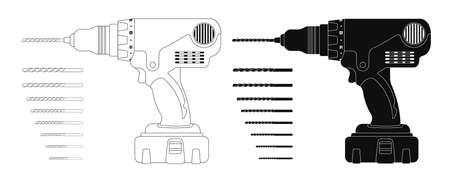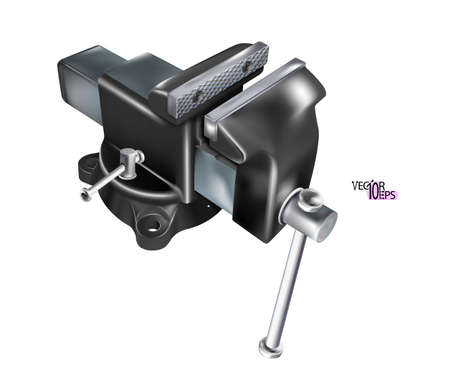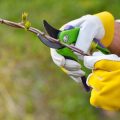Introduction to Garden Tool Safety
There’s something truly special about a British garden – whether it’s the neatly striped lawn, the hum of bees around blossoming borders, or the family gathered for a Sunday roast on the patio. These cherished outdoor spaces often rely on trusty tools like lawn mowers, strimmers, and hedge trimmers to keep them looking their best. But before we roll up our sleeves and set out to tame the wild green, it’s essential to remember that these powerful helpers deserve a moment of respect and care. Just as we teach our little ones to look both ways before crossing the road or pop on wellies before splashing in puddles, running pre-use safety checks on garden equipment should become part of every family’s gardening tradition. With a few simple habits, we can ensure our gardens remain not only beautiful but safe places for everyone to enjoy, season after season.
Inspection of Electrical Leads and Plugs
Before you begin your gardening adventure with your lawn mower, strimmer, or hedge trimmer, it’s essential to pay close attention to the electrical leads and plugs. In the UK, where unpredictable weather and outdoor conditions can take their toll on equipment, following British safety standards isn’t just a guideline—it’s a must for keeping everyone safe in the garden.
What to Look Out For
Take a moment to imagine you’re setting up for a sunny Saturday in the garden. You reach for your extension lead, only to spot some suspicious wear near the plug. Here’s what you should check before plugging in:
| Check | Why It Matters | Action If Problem Found |
|---|---|---|
| Frayed or Exposed Wires | Exposed wires can cause electric shocks or fires. | Do not use; replace cable immediately. |
| Damaged Plugs (cracks, loose pins) | Poor connections may result in overheating or electric shock. | Replace plug or seek professional repair. |
| Loose Cable Connections at Plug | Cables pulling away from plugs are a hazard. | Tighten connections or replace plug as needed. |
| Mismatched Fuses (UK spec 3A/13A) | The wrong fuse can fail to protect the tool properly. | Replace with correct BS 1362 fuse. |
| RCD (Residual Current Device) Check | An RCD helps prevent fatal electric shocks outdoors. | If RCD fails test, do not use; replace or repair device. |
Everyday Safety Habits
As part of your pre-use ritual, always unravel leads fully to prevent overheating and keep them clear of water or damp grass—especially important with Britain’s frequent showers. Remember, even a small nick in the cable is reason enough to pause and repair. If you’re working with children nearby, involve them by turning inspection into a game: “Can you spot anything unusual?” This not only keeps everyone safe but also teaches young gardeners about responsibility and care for their tools.
A Note on British Standards
Your equipment should carry the British Standard kite mark (BSI), indicating it meets strict safety requirements. When replacing plugs or fuses, stick to BS 1363 for plugs and BS 1362 for fuses—these are tried and tested for UK homes and gardens. And don’t forget: an outdoor RCD adaptor is a small investment that could save lives if something goes awry with your equipment during use.

3. Checking Blades and Moving Parts
Before you set out to tackle your garden, take a moment to channel the curiosity of a child exploring their favourite park. Just as little ones inspect every stone and leaf with wide-eyed wonder, give your lawn mower, strimmer, or hedge trimmer’s blades and moving parts a good look-over. Gently check for any nicks, cracks, or signs of rust on the blades—these can affect how well the machine works and could even pose a safety risk.
If you’re using a strimmer, examine the cutting string or line for fraying or thinning; it’s a bit like noticing if your shoelaces are about to snap before tying them up for a day out. The same goes for hedge trimmers: run your eyes along the length of each blade, looking out for anything bent or loose. If you spot anything unusual, it’s much safer to replace or repair these parts rather than risk an accident.
Encourage everyone in the family to be observant—much like searching for ladybirds in the grass—so that no detail goes unnoticed. By keeping your equipment in tip-top shape, you not only protect yourself but also help your trusty garden tools last longer and work more effectively. After all, just as healthy plants need careful tending, safe gardening starts with mindful preparation.
4. Ensuring Safety Guards and Shields Are in Place
Before starting your lawn mower, strimmer, or hedge trimmer, it’s essential to check that all safety guards and shields are correctly fitted. Much like popping on a raincoat before the familiar British drizzle, these protective features act as your first line of defence against unexpected hazards. Take a moment to gently inspect each guard and cover—ensure there are no cracks, missing bolts, or loose fittings. Just as you wouldn’t let your child dash into the garden without their wellies when puddles beckon, don’t be tempted to operate your equipment without every shield securely in place.
| Tool | Key Guards & Shields | What to Check |
|---|---|---|
| Lawn Mower | Blade guard, discharge chute cover | No cracks; firmly attached; not obstructed by grass |
| Strimmer | Cutter shield, debris guard | No signs of wear; secure fixings; not bent or warped |
| Hedge Trimmer | Blade cover, hand guard | Properly snapped on; no looseness or sharp edges exposed |
If you spot any damage or missing parts, resist the urge to “make do”—even for just a quick tidy-up. Remember, these guards are designed with your safety (and that of those around you) in mind. Taking a few extra minutes for this check is much like making sure everyone’s zipped up before heading outdoors: it’s a small step that makes all the difference when the unexpected arrives.
5. Personal Protective Equipment (PPE) Essentials
Before you even think about starting up the lawn mower, strimmer, or hedge trimmer, lets gather our garden gear and suit up like a family of safety superheroes! Just as we make sure our plants are protected from harsh weather, we need to shield ourselves from any potential accidents. Here’s a handy checklist to help keep everyone safe and sound while working in the garden.
Checklist: Recommended PPE for Garden Tool Use
- Sturdy Gloves: Always wear tough gardening gloves to protect your hands from sharp blades, flying debris, and thorns. In the UK, look for gloves marked with EN388 for excellent protection—perfect for all ages lending a hand.
- Safety Goggles: Protect those peepers! Whether you’re trimming hedges or mowing the lawn, goggles shield your eyes from dust, grass clippings, and unexpected twigs. Opt for wrap-around styles available at most British DIY shops.
- Sturdy Shoes or Boots: Flip-flops are for the beach—not the garden! Ensure everyone wears closed-toe shoes or boots with good grip. Wellies work wonders in typical British weather and keep feet dry and safe.
- Ear Protection: For loud tools like petrol mowers or powerful strimmers, ear defenders or plugs help protect little and big ears alike from noise damage.
- Long Trousers and Sleeves: Covering arms and legs helps guard against cuts and scratches—plus it keeps pesky nettles at bay!
- High-Visibility Vest (Optional): If you’re working near a driveway or public path, pop on a hi-vis vest so everyone knows you’re there—a top tip from UK council gardeners!
Plant-Inspired Family Tip
Before every gardening session, do a quick PPE check together—just like watering your favourite houseplant before heading out. Children love ticking off the checklist and learning that safety is as much a part of gardening as planting seeds.
Remember:
The right protective gear doesn’t just keep us safe; it sets a great example for young helpers. With everyone kitted out in proper PPE—British style—we can enjoy our garden adventures together and create leafy memories for years to come!
6. Clear the Working Area
Before you fire up your mower, strimmer, or hedge trimmer, it’s essential to clear the working area—think of it as preparing the stage for a safe and efficient performance. This is a brilliant opportunity to turn safety into a family affair and teach children valuable lessons about teamwork and garden care. Gather everyone together for a quick ‘garden sweep’. Encourage little ones to become nature detectives, searching for forgotten toys, stray balls, or even garden tools that may have been left behind in the grass or under the hedge. It’s also wise to keep an eye out for any wildlife—hedgehogs and frogs are often found sheltering in British gardens. Gently check underneath bushes and along the lawn edges to make sure no creatures are hiding where you plan to work. Make it fun by turning the tidy-up into a mini-treasure hunt, with each family member responsible for a different corner of the garden. Removing all obstacles not only protects your equipment but also prevents accidents caused by flying objects or tripping hazards. By involving everyone, you instil respect for both safety and nature—a true win-win for any British household.
7. Final Pre-Use Family Briefing
Before setting the garden whirring with lawn mowers, strimmers, and hedge trimmers, it’s time for a final pre-use family briefing—a cherished tradition in many UK households. Just as British gardens flourish best when tended with patience and care, so too does family teamwork blossom when everyone gathers for a moment of mindful preparation. Bring your loved ones together, from the littlest helpers to the most seasoned gardeners, and have a quick chat about the tasks ahead. Review who will be using which equipment, double-check that everyone recalls the safety points covered earlier, and remind each other of the importance of staying alert and considerate—especially when working around others or pets. This isn’t just about ticking off a checklist; it’s about fostering the spirit of cooperation and respect that makes British gardening such a special part of home life. Perhaps share a quick cuppa or swap encouraging words before you all head out. With tools ready and hearts united, you’ll be set to keep your patch looking its best—safe in the knowledge that every member of your family is prepared to work mindfully, shoulder to shoulder, inspired by tradition and nature alike.


